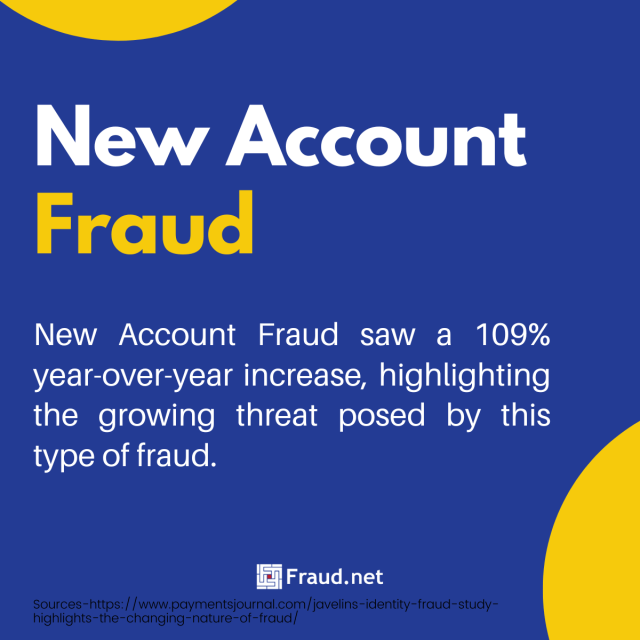What is New Account Fraud?
New account fraud occurs when fraudsters use stolen or synthetic identities to open new accounts with financial institutions, online retailers, or other businesses for illicit purposes. This type of fraud can result in financial losses, reputational damage, and regulatory penalties for organizations. New account fraud is on the rise, with a staggering 1.5 million attempts reported in recent years.
Common Types and Red Flags
There are 3 common ways fraudsters commit this fraud:
- Synthetic Identity Theft: Fraudsters create new identities by combining real and fake information to establish credit or open accounts. Red flags include inconsistencies in personal details and limited credit history.
- Account Takeover: Criminals gain unauthorized access to existing accounts or create new ones using stolen personal information. Red flags include sudden changes in account activity, unfamiliar devices accessing accounts, and multiple failed login attempts.
- Application Fraud: Fraudsters submit falsified information on applications to open new accounts. Red flags include inconsistencies in application details, unusually high-value transactions, and multiple account openings within a short period.
Solutions for New Account Fraud
To combat this fraud effectively, businesses can implement various strategies such as identity verification checks, biometric authentication, device fingerprinting, behavior analysis, and monitoring for suspicious activities. Educating employees and customers about fraud prevention measures is also crucial in mitigating risks associated with this fraud. Most importantly, businesses can partner with a fraud or security firm with AI and machine learning tools uniquely suited for mitigating account fraud risk.
How Fraud.net Helps Prevent Account Fraud
Fraud.net offers specialized solutions to combat account fraud through advanced technologies and tools designed to detect and prevent fraudulent activities. By leveraging AI-driven fraud prevention mechanisms, Fraud.net can identify suspicious behaviors, anomalies in account creation patterns, and potential risks.
For instance, Fraud.net utilizes social media lookups, IP checks, password request monitoring, and other sophisticated checks to flag suspicious activities. By assigning fraud risk scores and employing real-time monitoring capabilities, Fraud.net empowers organizations to enhance their fraud detection efforts and safeguard against fraudulent activities.
Stay ahead of fraudsters by booking a demo to discover cutting-edge solutions to protect your business from this pervasive threat.




